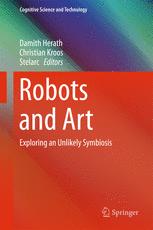

Most ebook files are in PDF format, so you can easily read them using various software such as Foxit Reader or directly on the Google Chrome browser.
Some ebook files are released by publishers in other formats such as .awz, .mobi, .epub, .fb2, etc. You may need to install specific software to read these formats on mobile/PC, such as Calibre.
Please read the tutorial at this link: https://ebookbell.com/faq
We offer FREE conversion to the popular formats you request; however, this may take some time. Therefore, right after payment, please email us, and we will try to provide the service as quickly as possible.
For some exceptional file formats or broken links (if any), please refrain from opening any disputes. Instead, email us first, and we will try to assist within a maximum of 6 hours.
EbookBell Team

5.0
28 reviewsThe first compendium on robotic art of its kind, this book explores the integration of robots into human society and our attitudes, fears and hopes in a world shared with autonomous machines. It raises questions about the benefits, risks and ethics of the transformative changes to society that are the consequence of robots taking on new roles alongside humans. It takes the reader on a journey into the world of the strange, the beautiful, the uncanny and the daring – and into the minds and works of some of the world’s most prolific creators of robotic art.
Offering an in-depth look at robotic art from the viewpoints of artists, engineers and scientists, it presents outstanding works of contemporary robotic art and brings together for the first time some of the most influential artists in this area in the last three decades. Starting from a historical review, this transdisciplinary work explores the nexus between robotic research and the arts and examines the diversity of robotic art, the encounter with robotic otherness, machine embodiment and human–robot interaction. Stories of difficulties, pitfalls and successes are recalled, characterising the multifaceted collaborations across the diverse disciplines required to create robotic art.
Although the book is primarily targeted towards researchers, artists and students in robotics, computer science and the arts, its accessible style appeals to anyone intrigued by robots and the arts.